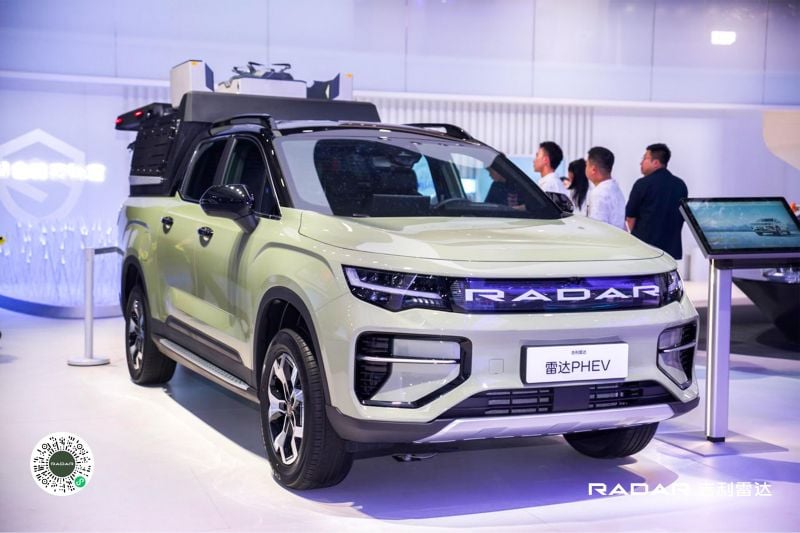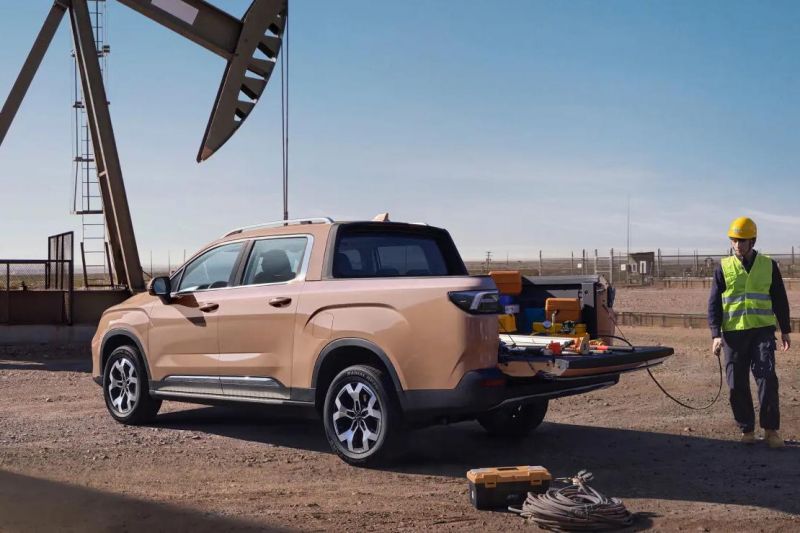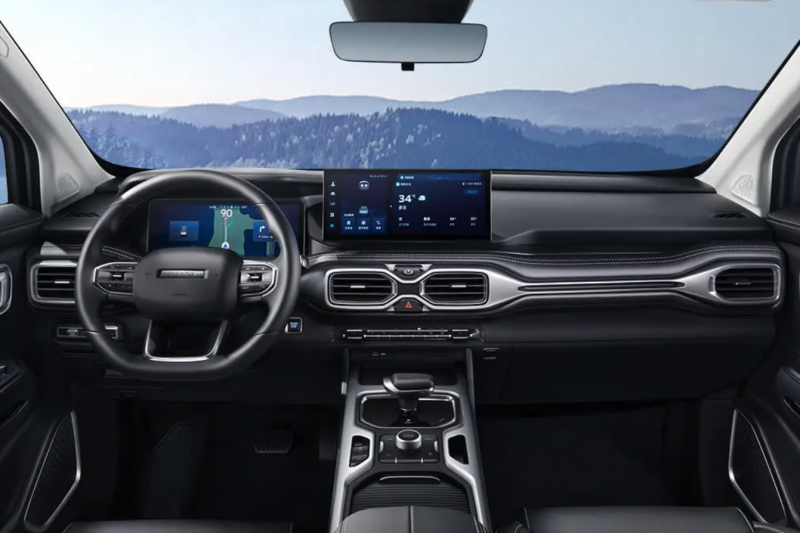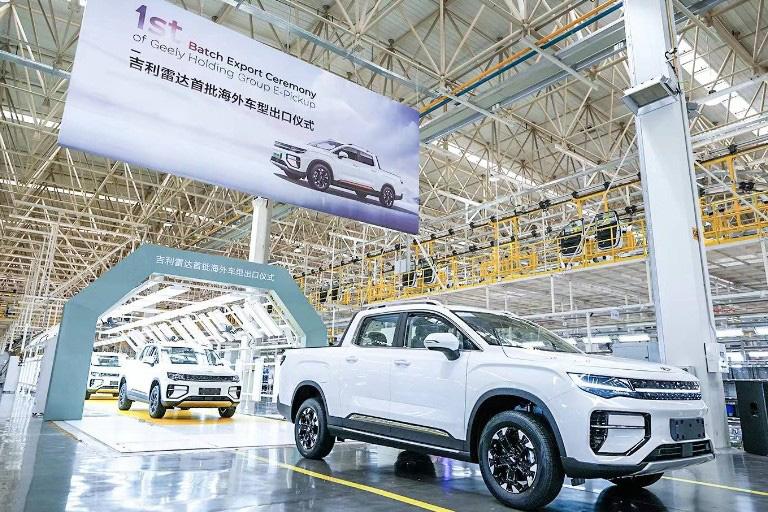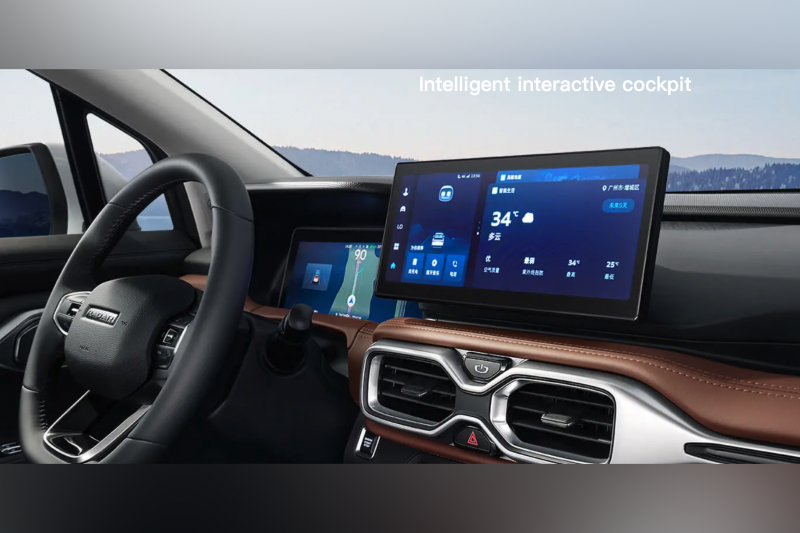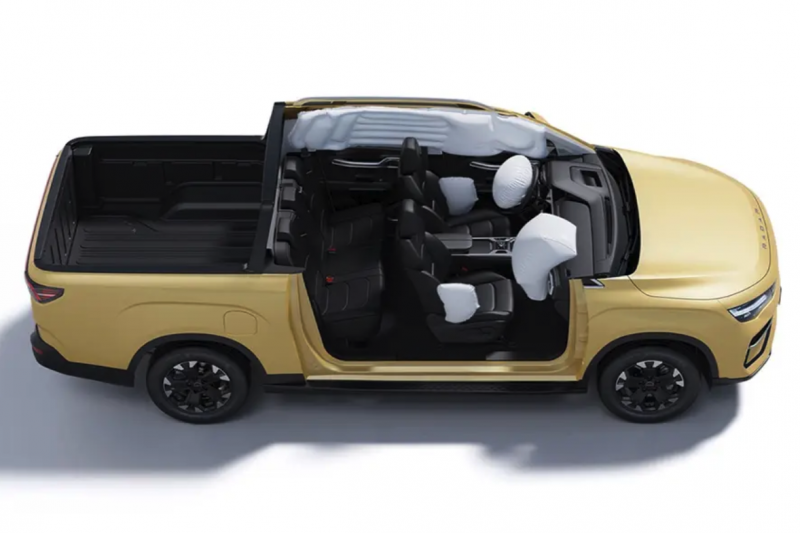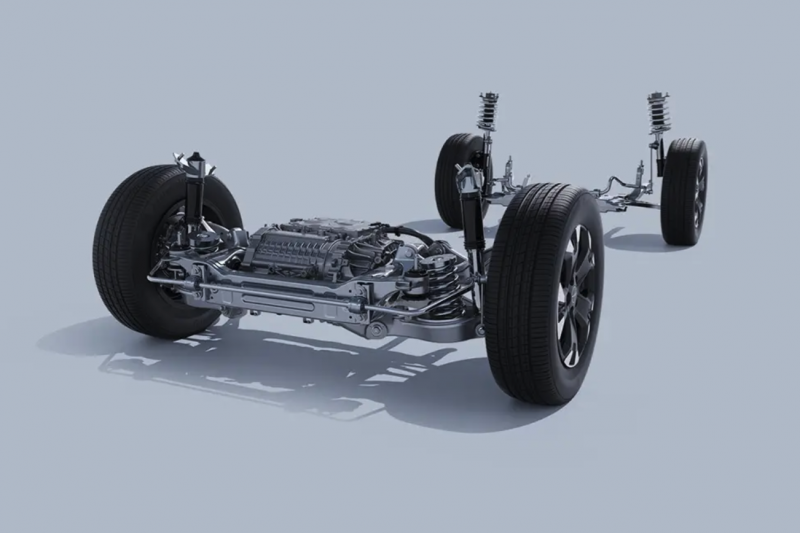Geely has blessed its Radar RD6 electric ute with the option of a plug-in hybrid (PHEV) powertrain, and there’s every chance it could be sold in Australia.
Revealed at the recent Shanghai motor show, the new dual-cab PHEV will reportedly offer more than 1000km of combined driving range – about double the 517km CLTC range of the all-electric RD6 with its biggest battery pack.
The Radar RD6 PHEV is the first pickup to be equipped with Geely’s Thor EM-i ‘super hybrid’ system, which already powers other models within the Chinese carmaker’s vast brand and model lineup.
Hundreds of new car deals are available through CarExpert right now. Get the experts on your side and score a great deal. Browse now.
It combines a front-mounted 1.5-litre turbocharged four-cylinder petrol engine and a three-speed dedicated hybrid transmission (3DHT) with a lithium iron phosphate (LFP) battery, enabling it to run on either petrol or electric power, or a combination of both.
According to CarNewsChina, the arrangement is a “dual-motor redundancy design, allowing continued operation in case of a single motor failure”.
Geely claims the hybrid powertrain provides responsive performance across various conditions, including high-altitude climbs and uneven terrain, and says the three-speed gearbox is designed to balance performance and fuel efficiency, particularly at higher speeds.
The hybrid system was tested in extreme conditions including high-speed, high-altitude, and low-temperature environments, and has passed China’s S-grade hybrid system reliability certification, which includes over 1000 bench tests, 400,000 hours of test time, and 40 million kilometres of vehicle endurance driving tests.
Geely says it has a thermal efficiency of 44.26 per cent and that intelligent energy management reduces its fuel consumption by 21 per cent compared to equivalent petrol-powered pickups.
The Radar RD6 is claimed to accelerate from 0-100km/h in 6.5 seconds, but few other details have been provided.
However, in the 2025 Geely Galaxy Starship 7 SUV, the EM-I combines a 1.5-litre petrol engine producing 82kW of power and 136Nm of torque with a 160kW/262Nm electric motor to deliver a total system output of 242kW.
CLTC fuel consumption is claimed to be 3.75L/100km, 0-100km/h acceleration is stated at 7.5 seconds, and top speed is listed at 180km/h.
Two battery capacities are available in China – 8.5kWh and 19.09kWh, offering pure-electric ranges of 55km and 120km respectively – each with a total claimed range of 1420km (CLTC).
The RD6 PHEV also introduces Geely’s new ‘Omni Stack’ energy platform including vehicle-to-load (V2L) capability that allows it to charge electrical appliances, and its new “Shuttle” connectivity platform that can connect the ute to drones and cloud-based systems, allowing remote control and data systems integration.
The Radar RD6 has already been indirectly confirmed for Australian release, and a PHEV version would give the Chinese brand a rival for the popular plug-in hybrid utes like the BYD Shark 6 and the upcoming GWM Cannon Alpha PHEV and Ford Ranger PHEV.
Revealed in China more than two years ago, the RD6 swapped Radar badging for the Riddara brand name for right-hand drive export markets including Thailand, where it was released in November.
Both Radar and Riddara are brands under the giant Zhejiang Geely Holding Group, the parent company of Volvo, Polestar, Smart, Zeekr, Lynk & Co, Lotus and Geely itself, which arrived in Australia earlier this year with the EX5 mid-size electric SUV.
In early 2024, Geely confirmed its Radar offshoot for launch in Australia and New Zealand.
“Radar Auto will accelerate its expansion into overseas markets, continuously expanding to markets in Asia-Pacific, Central Asia, Thailand, Middle East, Africa, Australia, New Zealand, Central and South America,” the company said in a statement.
However, Geely’s attempt to file an Australian trademark for the Radar name was blocked by a Singapore-based tyre company that sells Radar tyres in several countries, so the RD6 is likely to wear the Riddara name here, although Radar utes have also been sold with Geely badges in other left-hand-drive export markets.
In November, the vice-president of Geely Auto, Michael Song, confirmed a dual-cab ute from the carmaker would be sold in Australia, without naming the RD6 or providing any specific release timing.
“Pickup trucks are a special category in Australia. We don’t consider them as regular family vehicles,” said Mr Song.
“I’m very clear that pickup trucks have important markets globally.
“The proportion of pickup trucks in right-hand drive markets is larger than in left-hand drive markets, but the fact is that pickup truck demand varies significantly across different regions,” he added, referring to the fact that commercial utility vehicles account for about 20 per cent of Australia’s new vehicle market.
Light commercial vehicles notched up over 270,000 registrations here in 2024, accounting for more than 22 per cent of the total new-vehicle market, the vast majority of which were pickup or cab/chassis utes. So it’s no surprise the dominant diesel-powered legacy models led by the Ranger and HiLux are facing increasing competition from a host of new entrants.
But Mr Song made it clear that Geely’s first ute will offer a variety of powertrains.
“We have already made strategic plans regarding pickup trucks, and it’s not just about BEV pickup trucks – we have also planned for diversified energy solutions,” he said, potentially referring to combustion, hybrid and plug-in hybrid models.
Mr Song also said Geely will ensure its products are right for Australia in terms of specifications and the driving experience. The brand previously confirmed a local chassis and ADAS tuning program for the EX5 and Mr Song said Geely will do the same with subsequent new models.
In Thailand, the Riddara RD6 is offered in single-motor rear-wheel drive electric form with two different battery packs, while an all-wheel drive version of the Radar RD6 called the Horizon is sold in China.
The single electric motor in the Riddara RD6 produces 200kW of power and 384Nm of torque. It’s fed by either a 63kWh battery pack that offers a CLTC claimed range of 385km, or an 86kWh battery pack with a CLTC range of 517km.
China’s RD6 Horizon employs dual electric motors producing a combined 315kW and 594Nm, powered by 73kWh or 86kWh battery packs delivering a respective 460km and 520km (CLTC).
Geely claims a 0-100km/h acceleration time of 4.5 seconds for the Radar RD6 AWD, and 7.3 seconds for the Riddara RD6 RWD export version. Braked towing capacities are listed at 2500kg and 3000kg, and payloads at up to 775kg and 865kg, respectively.
Underpinned by a car-like monocoque platform with four-wheel independent suspension rather than a ladder frame with live rear axle like Australia’s top-selling utes, the RD6 measures 5260mm long, 1900mm wide and 1865mm tall, on a 3120mm wheelbase, making it similar in size to the current Toyota HiLux.
The RD6’s tray measures 1525mm long, 1425mm wide and 540mm high, which is slightly smaller than the tubs of Australia’s most popular dual-cabs.


